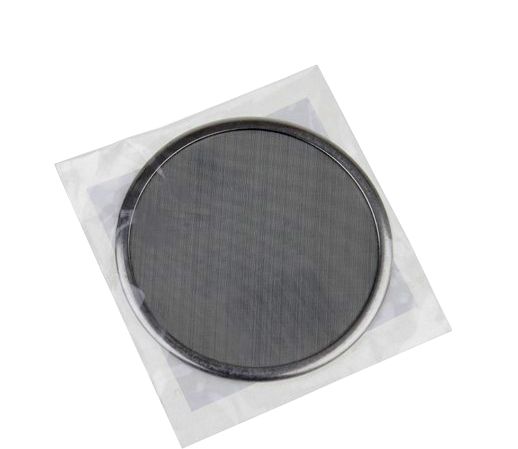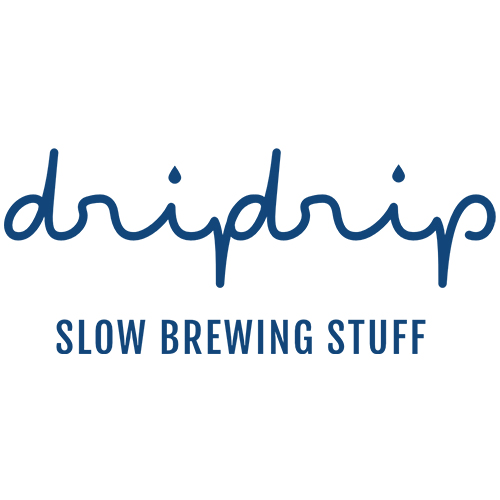
Filter around the reusable Dripdrip
In stainless acid
To be used with the Dripster Dripdrip to sip a coldbrew (cold brew coffee… so delicious!)
- Article No. 9174
- EAN: 4280001396173
Advantages
- Fast shipping with DHL
- Imported directly from Italy
- Freshness guaranteed
Reusable round steel filter - Dripdrip
This round filter has a diameter of 5 cm and is designed for use with the Dripster from Dripdrip. It enhances the flavour of coffee by ensuring that the ground coffee is evenly moistened.
Use and effect
Before brewing, the ground coffee is briefly moistened. During percolation (the extraction/infusion process, see explanations below), the water drips slowly onto the coffee grounds. To prevent the water from dripping onto the ground coffee in the same place and the ground coffee from being used unevenly, a round filter is placed over the entire surface of the ground coffee. Because it has been moistened beforehand, the water is distributed evenly, so that all the contents are extracted and reveal maximum flavour. The round filter can be rinsed and re-used as often as necessary, as it is made from high-quality stainless steel.
Physico-chemical basis of coldbrewing
Pre-infusion and infusion phase
Infusion plays an important role in coffee preparation. In general, the ground beans are simply mixed with water. In the coldbrew brewing process, a distinction is made between the pre-infusion phase and the infusion phase. During the infusion phase, the transfer of cell components damaged by the grinding operation into the extraction agent is very important. In the infusion phase, the infusion agent penetrates the undamaged and uninjured cells, where infusion proceeds much more slowly.
What does percolation mean?
During percolation, the coffee grounds are wetted drop by drop with water. The speed is set to one drop per second. This very slow speed makes the extraction phase more efficient. The degree of concentration between the water and the ground coffee is maintained by continuous dripping. This produces higher concentrations than if all the water were added and drained off quickly, as the water cannot penetrate the entire surface in such a short time.
Cold infusion vs. hot infusion
The water molecule is polar due to the high electronegativity of oxygen. Polar substances such as salts dissolve in water. This is why they are called hydrophilic (Hydro = water, phil = magnet). Lipophilic substances (lipos = fat) dissolve in fats or lipophilic solvents, such as nail varnish, which dissolves in acetone. Water and oil, on the other hand, repel each other. At room temperature, water forms what are known as "clusters", where water molecules come together briefly (for around 1 to 20 picoseconds) to form larger molecules due to their polarity. This makes the water more hydrophilic. If the water is heated, the clusters are destroyed. The water then becomes more lipophilic. This is one of the reasons why hot water is used for rinsing. Solubility also depends on temperature. If the coffee is sprinkled with hot water, the extract develops a full flavour, as the fat-soluble aromatic substances are also dissolved.
However, the coldbrew process has an equally intense flavour. Whereas conventional filter coffee preparation only uses the infusion phase and therefore only a fraction of the coffee (depending on the degree of grinding), the coldbrew method extracts the entire coffee. Thanks to percolation, the effect of cluster formation and heat solubility in the hot brewing method is offset by slow extraction. What's more, cold extraction does not dissolve substances that are difficult to dissolve, such as tannins, which are responsible for a bitter taste. As a result, the coffee tastes even rounder.
EAN: 4280001396173
Tradena UG & Co. KG, Leopoldstraße 2-8, 32051 Herford, Germany, www.dripdropceramics.com


